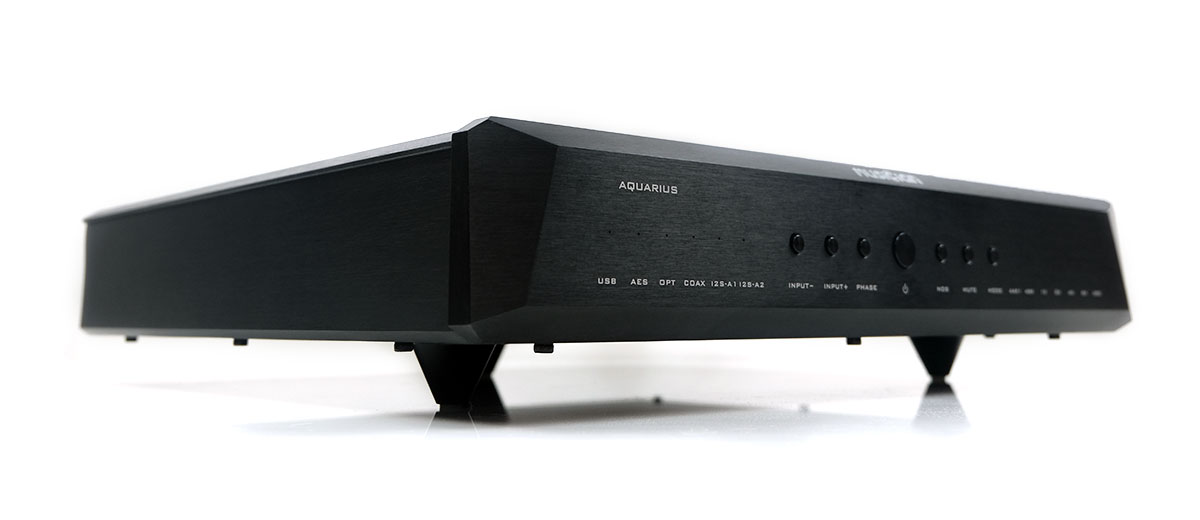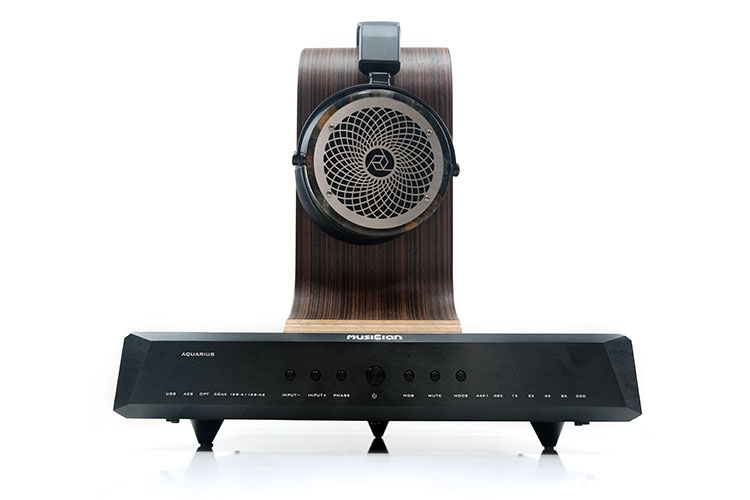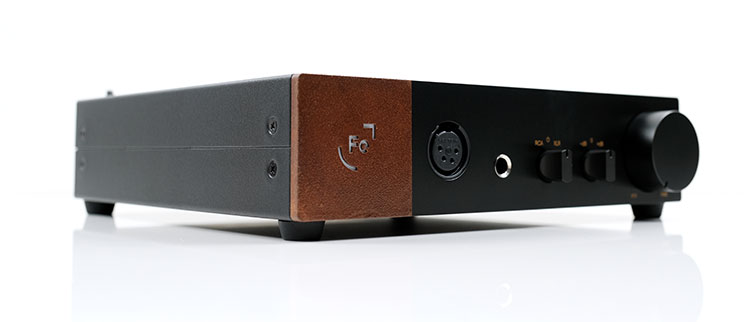Sound Impressions
Summary
Once properly run in, the Musician Audio Aquarius is one of the most natural and effortless sounding R-2R DACs I have reviewed to date.
Importantly, if you are sitting on a Pegasus DAC from the same company then this is a solid upgrade without seriously messing with that ‘house’ tonal quality that I have come to really enjoy from Musician Audio gear.
And what is that tonal ‘house sound’? Well, what you get is a subtle analog overtone to almost any amplifier performance injecting a very life-like quality to both instrumentals and vocals alike. This time, however, compared to the Pegasus you have a big lift in dynamic range, an expanded soundstage, and definitely a more holographic and detailed one at that.
In a way, this reminds me of the difference between the two Luxury & Precision P series R-2R DAPs. The original P6 was smooth, warm, and delicious to listen to with the P6 Pro shifting more to a reference-like timbral balance without losing the original’s gorgeous reproduction of note texture.
The same here is true for the jump from the Pegasus to the Aquarius. You get a slight tonal shift towards a neutral coloration that greatly enhances both note definition and clarity but with just enough of a liquid overtone to soften leading edges in a way that allows notes to break in a more forgiving manner compared to brighter delta-sigma DACs.
This is in no way a dry sound, a sound more rooted in natural realism but with that signature R-2R ‘gritty’ treatment in note texture that gives each instrument and vocal so much believable and enjoyable character.
It pairs so easily with just about any amplifier without overly upsetting the amplifier’s own core signature. Rather, it operates more like a ‘calm sea’ just refining any edginess, ensuring sibilance is accurate rather than emphasized and cymbal hits ring true rather than splashy.
Break-in Period
You need to be very careful jumping to conclusions on the final timbral quality right out of the box. Like the Pegasus, the resistor and cap-laden topology of the Aquarius needs time to settle down.
A lot of time actually to get it sounding just right with Musician Audio recommending you leave the unit turned on or on standby for up to 300 hours which is just over 12 days straight.
This particular unit was running for around 240-320 hours when I started compiling the final write-up of this review. During that time the DAC went from a slightly shrill and small-sounding performer to a more robust, powerful, and natural-sounding tour de force.
Timbre
It would almost seem churlish to call this a warm analog-sounding DAC and call it a day. It really isn’t though I would argue it is more relaxed and slightly softer in its timbral balance compared to punchier and more neutral R-2R DACs such as the Holo Audio Spring 2.
If you are leaping from a clean or neutral delta-sigma DAC then it’s quite a sea change in how your audio will be delivered to your favorite amplifier. For a start, you get less treble ‘shine’ or hardness on the attack, giving the top-end some pure and noticeable sparkle but without any unnatural harshness.
That being said there is more treble energy and extension from the Aquarius when compared to the smaller Pegasus. It’s that additional airy treble detail and extension that gives it that enhanced realism and energy that is lacking in the Pegasus mids timbre when the two go head-to-head.
The timbral realism is superb also with the vocal performances. Again, the core amplifier quality will temper the exact coloration so if you are using something like the HA-300MK2 SETA amplifier it will sound a little smoother and sweeter compared to the more precise and drier Ferrum OOR.
The Aquarius simply keeps the overall vocal tone very natural preventing any excessive sharp overtones or sounding overly smoothed over or rounded and lacking in air.
The sub-bass on the Aquarius is spectacular. Not to be confused with the outright weighty aggression of something like the Little Dot DAC VII. No, this is about quality texture and lots of it with a slightly slower pace so that each note sounds like an ‘event’, hitting with some awesome solidity and dynamic presence.
Staging & Dynamics
This is where the most noticeable differences are between the Pegasus and the Aquarius. The amount of space afforded by the Aquarius is so much bigger creating a much deeper and airier quality to its staging presence compared to its smaller sibling.
It’s not just about just space either but also the accuracy of the imaging, the improved instrumental separation, and the dynamic range of the ‘in and out’ of the note which have all taken a big leap forward.
It makes the Pegasus almost seem vague and diffuse in its instrumental placement and dynamics behind the vocal which might seem unfair given how good the Pegasus actually is. It also does a hell of a job also fleshing out any core characteristics of good amplifiers staging qualities.
For example, the HA-300MK2 is a holographic-sounding amplifier. The Aquarius really takes nothing away from that giving headphones like the Diana TC a very wide stereo image but at the same time retaining a stronger vocal image rather than allowing it to melt away in the background.
One thing I did notice is that the Aquarius doesn’t deliver the same filled-in mid-to-upper bass akin to the Hugo TT2. It has excellent sub-bass depth and power with weighty amplifiers like the Envy but it’s a shade less forward in the lower mids compared to the TT2.
In turn, you will perceive a greater level of bass to mids separation from the Aquarius compared to more mids-focused DACs like the TT2. So, it is strong for sub-bass with some excellent textured body but it might lack a bit of comparative upper-bass bloom or a forward mid-bass presence.
Synergy
Multiple I²S
The Aquarius I²S is a fairly flexible friend for pairing with sources or transports that use the I²S protocol.
For example, my two relevant connections here would be the Cayin iDAP-6 streamer and the NuPrime CDP-9 CD transport. On the Pegasus single I²S slot it was one or the other, however, with the Aquarius, I can finally have both in at the same time giving me a lot more of a system feel to the setup.
Compared to the Gustard X16 and the X18 it offers superior compatibility with neither of these units functioning with the two Gustard DACs. Both work just fine with the Aquarius without having to resort to cycling through the phase modes.
And even if you do cycle through them they still give out audio sound quality whereas the Gustard units just offered white noise.
Cycling through the modes is pretty easy. You simply press mute for 3 seconds and then hit the phase button whilst the I²S is flashing to pick the required mode. The Aquarius sample rate indicator will light up in various sequences indicating which of the 8 modes you are currently using.
For the iDAP-6 and CDP-9, I keep the mode on its default mode, (1X), as it sounded the smoothest and most balanced sounding of the 8 options. Others further up squeezed the sounded a little sounding harsher or brighter and not quite right.
NOS & I²S
Like the Pegasus performance, I felt the I²S performance was slightly smoother sounding compared to the USB equivalent.
I have a few bright-sounding audio tracks which tend to have vocal sibilance that can jar with poor matchups. Particularly clean-sounding headphones such as the Diana TC and the Ferrum OOR. This can be an unforgiving setup for bright mixing.
Throwing in a smoother R-2R DAC behind this setup is my go-to for smoothing out that sibilance but with USB and particularly using the Aquarius OS mode it will not mask it completely.
Switching to iDAP6 I²S from my PC’s USB output brought some nuance refinement to the Diana TC/OOR/Aquarius chain. Just a slightly more liquid overtone and less sharpness in the vocal leading edges. Dynamics remain unaffected for me which is slightly different from the Pegasus which I felt to be more dynamic sounding using USB.
You can temper the tone even more by moving to NOS or the non-oversampling mode of the Aquarius which is my preferred setting in most instances. Like the Pegasus performance, the Aquarius OS will inject a bit more treble clarity and subtly shorten the decay to deliver something a bit more lively but not as organic sounding for me.
Those with smoother-sounding setups might prefer the OS mode just to give the performance a little more bite but for solid-state setups such as the OOR and the very clean-sounding Diana TC, the smoother NOS setting was just perfect.
Amplifier Pairing Summary
There is really no high-performing amplifier I would shy away from pairing the Aquarius with, be it SETA or solid-state. It has a tremendously likable tonal quality and excellent resolution. Compared to the Pegasus, it will deliver a more holographic sound and superior imaging to go along with it.
The analog overtone will come across very easily with transparent ‘gain on a wire’ amps such as the Ferrum OOR and its spacious presentation allows holographic amps such as the Cayin HA-300MK2 to shine.
Testing Preferences
We tested a total of 4 headphone amplifiers including the Cayin HA-300MK2, a Feliks Audio Envy, Auris Audio’s HA-2SF, and the Ferrum OOR. For each one, I keep the headphone pairings quite consistent with the Diana TC as the primary pairing, followed by a Rosson Audio Design RAD-0, an Audeze LCD-5, and the Final D8000 Pro.
With each pairing, the Aquarius brought something different to the table meaning it did not tinker too much with the core sound signature of each amplifier.
If anything, the solid-state Ferrum had me switching to the NOS setting just to keep everything as natural sounding as possible with brightly mixed audio tracks. With the 3 tube amplifiers, I had a preference for OS with the smoother sounding HA-300MK2 and could switch either way for both solid-state rectified tube amps: the Envy and the HA-2SF.
Cayin HA-300MK2
Out of all the pairings, the HA-300MK2 brought the most to the table in terms of that authentic analog overtone and the most holographic soundstage with the Aquarius as its source.
The Diana TC sounded huge with this pairing. This is not a forgiving headphone but it sounded delicious with this setup sucking me right into the soundstage and throwing spatial cues out very wide indeed.
Its only weakness is the bass depth which is not quite as beefy as some of the competing amplifiers. This is perhaps not the ideal match for those looking to tease out a bit of power.
The Aquarius will do very well indeed in terms of note texture, especially through the mids and vocals but if you want depth with this DAC pairing then the Envy will give you a bit more.
Feliks Audio Envy
The Envy/Aquarius pairing for bass texture and density with the Diana TC and the Rosson Audio Design RAD-0 was superb though at the cost of a little less staging expansiveness. You get a robust bass fundamental and a solid center image though so vocals are firm and to the fore alongside the lows and low-mids.
I would pick this pairing also with the LCD-5. The combination of punchier dense lows and a slightly more relaxed midrange compared to something like the more forward Spring 2 DAC or the mid-centric Hugo TT2 DAC makes this for a very dynamic pairing without any shoutiness.
Ferrum OOR
A few DACs have left me a bit cold with the revealing Ferrum OOR. Usually, delta-sigma neutral DACs can leave a somewhat dry and analytical tone with headphones such as the D8000 Pro and more so with the Diana TC.
Not the case here at all with the Aquarius using its NOS setting. It is still a solid-state punchy and clean sound but the texture is richer and more organic sounding than with most delta-sigma DACs I have paired with this amp thus far. Vocals also have a slightly softer edge making it a much more agreeable and smoother sounding with our tested headphones.
Just watch though the staging expansiveness is not a selling point of the OOR. It’s a good size but not as holographic as the HA-300MK2/Aquarius pairing nor will it dig as deep as the Envy.
Voltage Differences
The one caveat I still have with the Aquarius, and that seems to be a legacy feature from the Pegasus also is the slightly weaker voltage rating from its analog outputs. It just robs any pairing of a little vibrance and punchiness compared to higher Vrms rated DACs such as the Holo Audio Spring 2 and the TT2 when tested at equal volumes from our chosen amplifier.
You can up the gain a little if you so need to on solid-state amps or simply up the volume on any amplifier to partially compensate. However, it still leaves a very slightly relaxed and softer feel to the Aquarius presentation in general, especially through the mids and highs.






